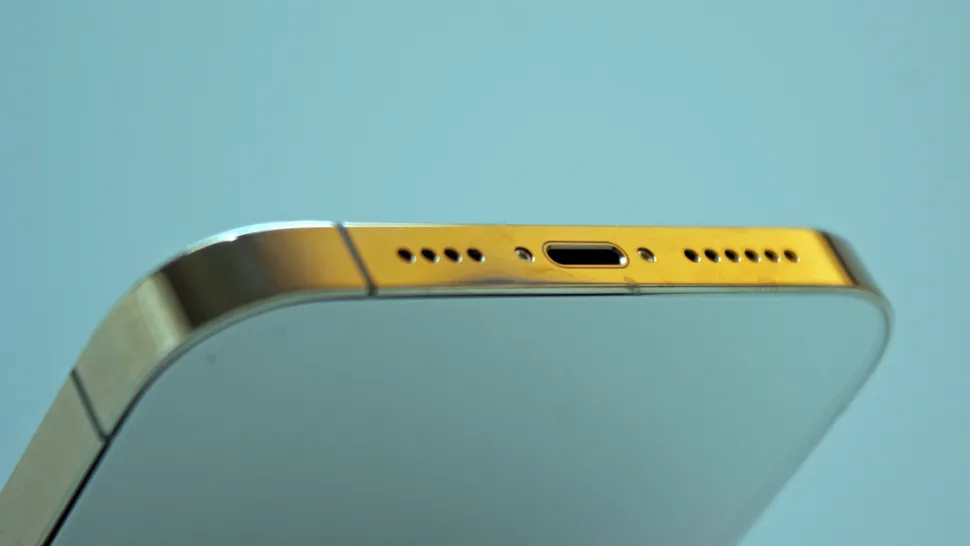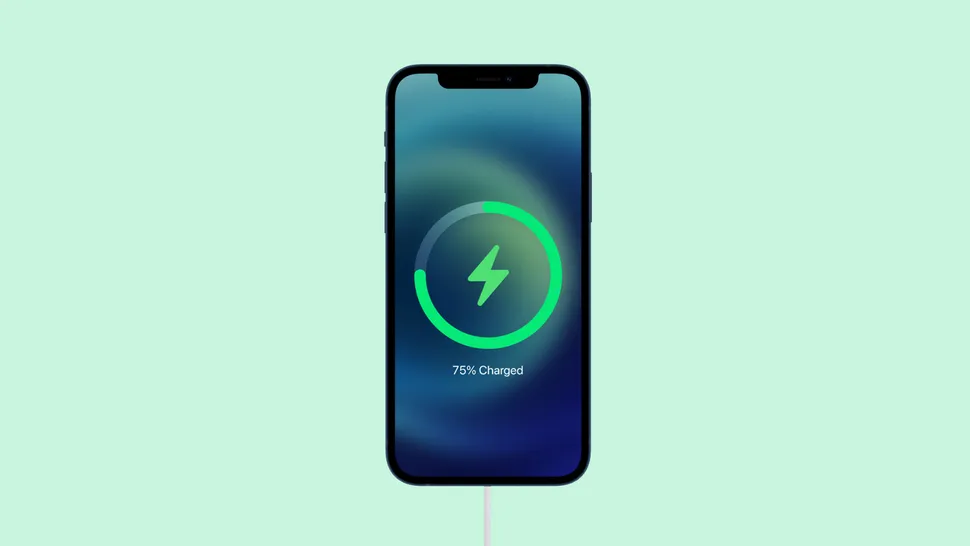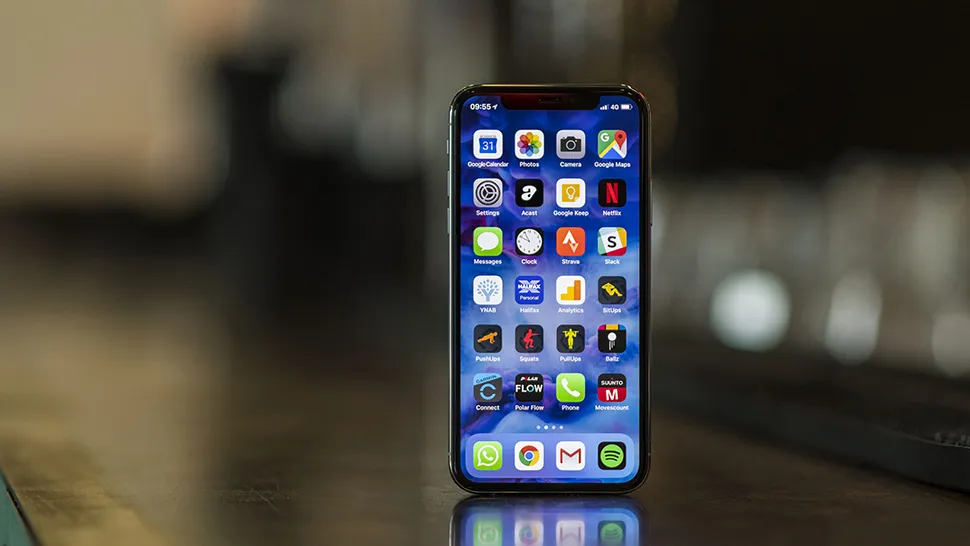




Regardless, it's always fun and informative seeing what ideas the designers behind our favorite phone brands are coming up with and considering.
The world's first Qualcomm Snapdragon 888-powered smartphone, the Xiaomi Mi 11, has been released in China. The device boasts an impressive specifications sheet: 6.81 inches AMOLED panel with a 3200 x 1440 resolution and 120Hz refresh rate, an under-screen fingerprint sensor, a triple camera system with a 108MP main sensor, a 5MP telephoto unit, and a 13MP ultrawide module, and a 4,600mAh battery with support for 55W wired and 50W wireless charging.
The base variant with 8GB of RAM and 128GB of storage costs 3,999 Chinese Yuan (~$612). Western prices haven't been announced yet.
According to Xiaomi executive Pan Jiutang (via Xiaomi Today), the Mi 11 costs the same to make as the iPhone 12. The 128GB variant of the phone retails for 6799 Chinese Yuan in China and $879 in the US.
This makes the iPhone 12 nearly $429 more expensive in China.
Unlike the iPhone 12, the Mi 11 can be bought as part of a bundle that includes a charger at no extra cost.
Although Xiaomi hasn't revealed Mi 11's BoM, we do know that the company has pledged to keep profit margins low. Apple and Samsung, on the other hand, are known to keep hefty margins on their phones.
This also explains why Apple captured 59 percent of the industry profit in Q2 2020, even though it was the third largest player and made up only 14 percent of the total shipments.
Xiaomi's competitive pricing strategy has helped it find success in two of the world's largest smartphone markets - China and India. In the third quarter of 2020, the company toppled Apple as the third-largest smartphone manufacturer. This was largely because Xiaomi aggressively tried to seize Huawei's market share and Apple's shipments suffered because of the delay in the launch of the iPhone 12 series.
Is 2021 the year Apple embraces a portless world?
In 2021, more than ten years after the beginning of the smartphone revolution, it is easy to forget how many design trends have been and gone. Since 2007, with the launch of the first iPhone, we have lost keyboards, buttons, ports, bezels and more in the quest for ‘less’.
What the ‘perfect’ smartphone is supposed to look like is a question that has yet to find an answer, but is one that designers are constantly working to solve. It seems at the moment that the solution may be a glass sandwich with a screen and nothing else, and 2021 is looking increasingly likely as the year that this ‘final’ design may appear.
Crucially, it is Apple that is expected to lead the charge. Apple occupies an odd position in the smartphone market, having a reputation for incremental conservatism in design, but regularly leading the charge in new trends. Apple has pioneered such beloved changes as the screen notch, face unlock, multiple rear cameras, the removal of the headphone jack and fingerprint sensors.
Such is the cultural heft and influence of the company that choices it makes tend to be accepted by the public at large. Wireless charging came much closer to hitting the mainstream when Apple adopted the tech in its handsets, and the true wireless earbud market exploded when the headphone jack was dropped and AirPods were first sold as an alternative to wired options.
If the natural evolution of phone design is towards something ‘portless’, then it is likely that only Apple could pull the execution off in such a way that it became mainstream.
And Apple, to date, has been one of the few companies with the ‘courage’ to pull off such decisions... could it be set to happen with the iPhone 13? Some leaks and rumors suggest one of those handsets will be portless... so how likely is it to happen?
Why go portless?
What is the point in going portless? There are many schools of thought on the issue.
The primary driver is simply aesthetic - having fewer obstructions makes for a cleaner look and feel in the hand. There is also a benefit to durability, as charging ports have a tendency to come loose after continuous use, their absence would mean that this would cease to be an issue.
Advantages would also come in the form of increased waterproofing ratings, slightly more durable construction and increased space in the body of the smartphone for other components, such as larger batteries.
These were all the benefits of removing the headphone jack, it is likely they would be replicated with the removal of the power port.
Of course, there are a number of drawbacks, not least in terms of usability. Wireless charging, though convenient at times, can be finicky and generates a lot of heat. It requires the use of specific, relatively expensive chargers and takes longer to bring phones to a full charge than wired options.
Power ports also tend to double as data ports for synchronization with PC/Macs and for the use of dongles and accessories - removing this option would present a significant disadvantage to many.
With its iPhone 12 line, Apple has attempted to solve the first issue however. MagSafe charging is intended to hold the charger in the correct position on the iPhone it is connected to in order to ensure a stable and fast power transfer.
So far a number of accessories have been released which take advantage of this feature, and Apple’s attention in this area has led to an increased awareness of wireless charging as an option, although it still remains relatively niche.
Preparation in this area may indicate that the firm intends to release a fully portless smartphone in 2021, though at this point it is difficult to say. Any iPhone release will typically take place in Q4 of the year in question, and before mass production begins it is difficult to come across any leaks or insights that aren’t purely speculation.
Information supply chain
This being said, there have been a number of ‘informed guesses’ from influential tipsters which do indicate that a portless iPhone may make an appearance in the second half of 2021.
Jon Prosser, well known for his accurate predictions in this area, is confident this will happen. Ming-Chi Kuo of TF International Securities (making predictions from supply chain analysis) has released research that shows 2021 as the year a portless iPhone will make an appearance.
This report, released in 2019, correctly predicted the iPhone release slate for 2020, lending it some credence. It forecasts that one iPhone in 2021 will be portless, likely the highest end model. This would then set the trend for the year to follow, with that design feature to trickle down to the less expensive models.
Such techniques are tried and tested, especially with Apple. Its iPhone X was one of the first mainstream smartphones to sport a notch on its screen, and it was the first to break the $1000 price barrier. It was an unmitigated success for Apple, demonstrating the ability of the company to make the ‘new’ feel not only desirable, but essential.
There may be limits to this ability of course, maybe even the Cupertino firm might not have enough capital with the public to force this last and very final change.
Other companies after all have tried and failed to do the same. Chinese manufacturer Meizu’s effort in 2019 famously crashed and burned. The company tried to crowdfund the production of a portless smartphone, primarily as a publicity stunt, however it failed to achieve anything close to its funding goal.
Though many different factors came into this, a key point may be the hesitance of the public to let go of the convenience of wired charging. We've seen concept devices try to do similar from manufacturers like Oppo as well.
Regardless, if the reports are true, all eyes will be on Apple and the success of its portless phone. The company has jumped from strength to strength in the last decade, and it seems that little will get in its way.
Foldables, rollables and more
With any luck, 2021 will be a whole lot better than 2020 was, but at the very least there are loads of exciting smartphones to look forward to.
From high-profile handsets like the iPhone 13 to oddities like the LG Rollable, there should be something for everyone. Below, we’ve highlighted ten of the most interesting options that we’re expecting to see before the end of the year.
These are phones that in most cases are likely to be great, and at the very least should be interesting, unusual, or innovative.
Samsung Galaxy S21 range
The Samsung Galaxy S21 and its likely siblings – the Samsung Galaxy S21 Plus and Samsung Galaxy S21 Ultra – are probably the most highly anticipated Android phones. There shouldn’t be long to wait for them either, as it’s rumored that the Samsung Galaxy S21 range could be announced as soon as January 14.
So what should you expect from the three phones? It almost goes without saying that they’ll have cutting-edge power, with rumors suggesting they’ll pack either the Snapdragon 888 chipset (in the US) or the Exynos 2100 (in most other places) – both of which are likely to be among the year’s most powerful.
The most exciting upgrade though might be support for the S Pen stylus on the Samsung Galaxy S21 Ultra, a rumored move that could bring the phone a lot closer to the Galaxy Note range. We’re also hearing talk of high-spec cameras, with the S21 Ultra potentially offering 10x optical zoom.
iPhone 13 range
The iPhone 13 range is probably even more highly anticipated than the Samsung Galaxy S21 range, but there’s rather longer to wait for these phones, as they probably won’t land until September.
There could be some big upgrades for these new models, with high refresh rate screens, 1TB of storage, in-screen fingerprint scanners, and a smaller notch all rumored. There’s also talk of a periscope camera being added, which would allow for an increased optical zoom range.
With the phones being a long way off at the time of writing though, we’re not at all confident of these things yet. What you can be sure of is that they’ll be very powerful, and that Apple will probably offer the same assortment of handsets as in the iPhone 12 range – meaning an iPhone 13, an iPhone 13 mini, an iPhone 13 Pro, and an iPhone 13 Pro Max.
OnePlus 9 range
The OnePlus 9 range is likely to land in March or April and offer a slightly cheaper way to get the sort of cutting-edge tech we’re expecting to see in phones like the Samsung Galaxy S21.
There will probably be a OnePlus 9, a OnePlus 9 Pro, and possibly also a totally new model dubbed the OnePlus 9E.
As for what to expect, all three phones might use the top-end Snapdragon 888 chipset, and they’ll probably also have high refresh rate screens, with the Pro model likely offering at least 120Hz.
We don’t know a huge amount else about them yet, but leaks suggest the standard OnePlus 9 will have a 48MP main camera, a 48MP ultra-wide one, and an unknown third lens, as well as 8GB of RAM and 128GB of storage, while the OnePlus 9 Pro will probably be the only one of the three to have IP68 certification for water and dust resistance.
Samsung Galaxy Z Fold 3
The Samsung Galaxy Z Fold 3 isn’t likely to be as mainstream as most of the phones on this list, but it could be more exciting than most of them, as foldable phones are probably the future, and the Samsung Galaxy Z Fold 3 is likely to be the best one yet.
Beyond having a big, foldable screen, the main Samsung Galaxy Z Fold 3 rumors so far suggest it might support Samsung’s S Pen stylus, have an in-screen camera, and possibly even have an RGB light strip on its hinge.
We haven’t heard much else at the time of writing, but expect more rumors to roll in ahead of release, which could be in June if leaks are to be believed - though some sources reckon it won't land until the second half of the year.
LG Rollable
The LG Rollable is very much a wild card, not least because we’re not at all sure it even exists. But there is some evidence that LG is developing a phone with a rollable screen, and that it might be out sometime in 2021.
Based on a patent, this might be a device that lets you extend the left and right screen edges, but because it rolls rather than folds, and because the mechanism is compactly hidden within the phone, it might look much like a normal smartphone when the screen isn’t extended. According to another leak it might extend from 6.8 inches to 7.4 inches.
A trademark application for the ‘LG Rollable’ name meanwhile includes mention of “electronic touch screen pens”, so as with the Galaxy Z Fold 3, you might be able to get a stylus for it.
The LG Rollable sounds ambitious and we haven’t heard much about it yet, so there’s every chance it won’t land in 2021, and if it does it will probably be very expensive, but it certainly sounds interesting. The only release date rumor for it so far states that it could land in the first half of the year.
Oppo Find X3 range
Oppo isn’t as big a name as Samsung or OnePlus, but in recent years it’s been making phones that rival their best, and the Oppo Find X3 range could be the next ones to do that.
In fact, they might actually be more exciting and innovative than most of the big-name flagships, as rumors suggest the Oppo Find X3 Pro will have a macro camera that could function a bit like a microscope, with 25x zoom and lights around the lens.
The phone might additionally have NFC that works on both the front and back of the handset, so you can tap the screen against payment terminals rather than the rear – a small feature perhaps but one we’ve not really seen before.
Beyond that the specs sound top-end through and through, with talk of a 3K resolution, a high refresh rate screen, fast charging, loads of camera lenses, and more. And you shouldn’t have to wait long, as we’re expecting the Oppo Find X3 range to launch early in the year.
Nokia 10
We’ve been waiting for the Nokia 10 for a long time, so much so that it’s gone through a few names since it started being rumored – originally it was thought to be launching as the Nokia 9.1, but as time went on that changed to Nokia 9.2, 9.3, and now Nokia 10.
Whether 2021 will be the year it lands remains to be seen, especially since we still don’t really know much about it yet, but rumors point to an in-screen selfie camera, a sapphire glass display, a stainless steel frame, and a top-end Snapdragon 888 chipset, so this could be a very premium phone.
There’s also talk of it having a very different camera setup to the penta-lens Nokia 9 PureView, though in what ways it will differ is unclear.
iPhone SE 3
While the iPhone 13 range is clearly the most anticipated of Apple’s upcoming phones, the company might also launch a successor to the iPhone SE (2020) in 2021.
We’ve heard very little about the iPhone SE 3 so far and there’s every chance we won’t see it until a later year, but if it does launch in 2021 it will probably have an A14 Bionic chipset (the same as the iPhone 12 range).
There’s also talk of an iPhone SE Plus, which might end up being the iPhone SE 3 in all but name. This is thought to have a larger 5.5 or 6.1-inch screen, but to retain the general affordability of the iPhone SE range. What’s not clear is whether the iPhone SE 3 will keep the physical home button and big bezels – a design that’s becoming increasingly dated.
Samsung Galaxy Note 21 range
The biggest question about the Samsung Galaxy Note 21 range is whether it will even launch, with rumors swirling that Samsung is looking to add stylus support to the Galaxy S21 Ultra and Galaxy Z Fold 3 so that it can discontinue the Note range.
At this point it looks likely that the Note range’s days are numbered, but we might still get a Samsung Galaxy Note 21.
There’s not really any news on what it will offer yet, but as usual for the range you can expect an S Pen stylus, a big screen to make the most of it with, and plenty of power. If the Samsung Galaxy Note 21 does launch we’ll probably see it in or around August.
Sony Xperia 1 III Compact
As well as the expected Sony Xperia 1 III there are rumors that the company might launch a Sony Xperia 1 III Compact, and it’s this phone that we’re more excited about, as there aren’t many high-end compact phones that days.
Rumors suggest it might have a 5.5-inch screen and an upper mid-range chipset – though we’d hope for a high-end one. We don’t know much else yet about either the Compact or the standard Sony Xperia 1 III, but with the phones possibly launching in the first half of the year we’ll hopefully learn more before long.
Just as scheduled, Xiaomi Mi 11 officially went on sale for the first time in China at 0:00 on January 1. As the first Snapdragon 888-powered flagship product, the Mi 11 was already the center of attraction in the tech circle. The device also came with an extremely decent price tag, starting at 3999 yuan (~$612) which further beamed the searchlight on the model. As we were already expecting, the first sale turned out to be a reflection of the device’s popularity.
Xiaomi’s mobile phone division officially released the first sales report for the Mi 11 at 00:13, just 13 minutes after the first sales commenced. According to the details, its omnichannel sales exceeded 1.5 billion yuan in just 5 minutes. If calculated using the average price of 4,300 yuan, Xiaomi my have sold over 350,000 units of the device.
Already, the device is listed as out of stock on Xiaomi’s official mall despite the company claiming that it is prepared well-enough to maintain stocks of the Mi 11.
As a reminder, the Mi 11 packs a 6.81-inch curved display with a hole in the top left corner of the screen and Corning Gorilla Victus protection. The screen is not only bigger than that of the Mi 10 5G but also sharper as it has a 2K (3200 x 1440) resolution. It also has a 120Hz refresh rate and a 480Hz touch sampling rate.
The phone crams a 4600mAh battery under the hood with support for 55W fast wired charging, 50W fast wireless charging, and 10W reverse wireless charging. It also supports Quick Charge 4+, Quick Charge 3+, and Power Delivery 3.0.
The 5nm Snapdragon 888 chipset powers the device and is paired with 8GB or 12GB of LPDDR5 RAM and up to 256GB of UFS 3.1 high-speed storage. There is also an in-display fingerprint scanner, which Xiaomi says can also measure your heart rate in addition to unlocking your phone and authorizing payments. There are stereo speakers tuned by Harman Kardon, dual nano-SIM support, NFC, IR blaster, enhanced WiFi 6, and Bluetooth 5.2 with Qualcomm TrueWireless Stereo Plus. It runs MIUI 12 based on Android 11 out of the box.
The Xiaomi Mi 11 has three rear cameras. The main camera is a 108MP 1/1.33″ sensor with an f/1.85 aperture, a 7P lens, and a 1.6μm pixel size. There is a 13MP super wide-angle lens with a 123° field of view and the third camera is a 5MP 50mm telephoto macro camera. The front-facing camera is a 20MP sensor.













































